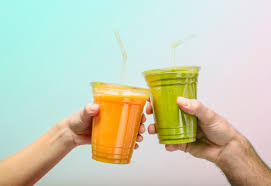A study from the Institute of Food Research has shown that Campylobacter’s persistence in food processing sites and the kitchen is boosted by ‘chicken juice.’
 Organic matter exuding from chicken carcasses, “chicken juice”, provides these bacteria with the perfect environment to persist in the food chain. This emphasises the importance of cleaning surfaces in food preparation, and may lead to more effective ways of cleaning that can reduce the incidence of Campylobacter.
Organic matter exuding from chicken carcasses, “chicken juice”, provides these bacteria with the perfect environment to persist in the food chain. This emphasises the importance of cleaning surfaces in food preparation, and may lead to more effective ways of cleaning that can reduce the incidence of Campylobacter.
The study was led by Helen Brown, a PhD student supervised by Dr Arnoud van Vliet at IFR, which is strategically funded by the Biotechnology and Biological Sciences Research Council. Helen’s PhD studentship is co-funded by an industrial partner, Campden BRI.
The researchers collected the liquids produced from defrosting chickens, and found that this helped Campylobacter attach to surfaces and subsequently form biofilms. Biofilms are specialised structures some bacteria form on surfaces that protect them from threats from the environment.
“We have discovered that this increase in biofilm formation was due to chicken juice coating the surfaces we used with a protein-rich film,” said Helen Brown. “This film then makes it much easier for the Campylobacter bacteria to attach to the surface, and it provides them with an additional rich food source.”
Campylobacter aren’t particularly hardy bacteria, so one area of research has been to understand exactly how they manage to survive outside of their usual habitat, the intestinal tract of poultry. They are sensitive to oxygen, but during biofilm formation the bacteria protect themselves with a layer of slime. This also makes them more resistant to antimicrobials and disinfection treatments
Understanding this and how Campylobacter persists in the food production process will help efforts to reduce the high percentage of chickens that reach consumers contaminated with the bacteria. Although thorough cooking kills off the bacteria, around 500,000 people suffer from Campylobacter food poisoning each year in the UK. Reducing this number, and the amount of infected chicken on supermarket shelves, is now the number one priority of the Food Standards Agency.
“This study highlights the importance of thorough cleaning of food preparation surfaces to limit the potential of bacteria to form biofilms,” said Helen.
Chicken juice enhances surface attachment and biofilm formation of Campylobacter jejuni
05.sep.14
Appl. Environ. Microbiol. November 2014 vol. 80 no. 22 7053-7060
Helen L. Brown, Mark Reuter, Louise J. Salt, Kathryn L. Cross, Roy P. Betts and Arnoud H. M. van Vliet; M. W. Griffiths, Editor
http://aem.asm.org/content/80/22/7053
Abstract
The bacterial pathogen Campylobacter jejuni is primarily transmitted via the consumption of contaminated foodstuffs, especially poultry meat. In food processing environments, C. jejuni is required to survive a multitude of stresses and requires the use of specific survival mechanisms, such as biofilms. An initial step in biofilm formation is bacterial attachment to a surface. Here, we investigated the effects of a chicken meat exudate (chicken juice) on C. jejuni surface attachment and biofilm formation. Supplementation of brucella broth with ≥5% chicken juice resulted in increased biofilm formation on glass, polystyrene, and stainless steel surfaces with four C. jejuni isolates and one C. coli isolate in both microaerobic and aerobic conditions. When incubated with chicken juice, C. jejuni was both able to grow and form biofilms in static cultures in aerobic conditions. Electron microscopy showed that C. jejuni cells were associated with chicken juice particulates attached to the abiotic surface rather than the surface itself. This suggests that chicken juice contributes to C. jejuni biofilm formation by covering and conditioning the abiotic surface and is a source of nutrients. Chicken juice was able to complement the reduction in biofilm formation of an aflagellated mutant of C. jejuni, indicating that chicken juice may support food chain transmission of isolates with lowered motility. We provide here a useful model for studying the interaction of C. jejuni biofilms in food chain-relevant conditions and also show a possible mechanism for C. jejuni cell attachment and biofilm initiation on abiotic surfaces within the food chain.
 While cases are declining, the number of cases reported per week remains slightly higher compared to the same period in previous years. To date, some 400 Cryptosporidium cases have been recorded.
While cases are declining, the number of cases reported per week remains slightly higher compared to the same period in previous years. To date, some 400 Cryptosporidium cases have been recorded.
 Right now there are two outbreaks linked to unpasteurized ciders in
Right now there are two outbreaks linked to unpasteurized ciders in 



 unprotected in stainless steel jugs."
unprotected in stainless steel jugs." on the outside of the packet.
on the outside of the packet. Canwest News Service reported
Canwest News Service reported.story.jpg)
 P.J. O’Rourke
P.J. O’Rourke